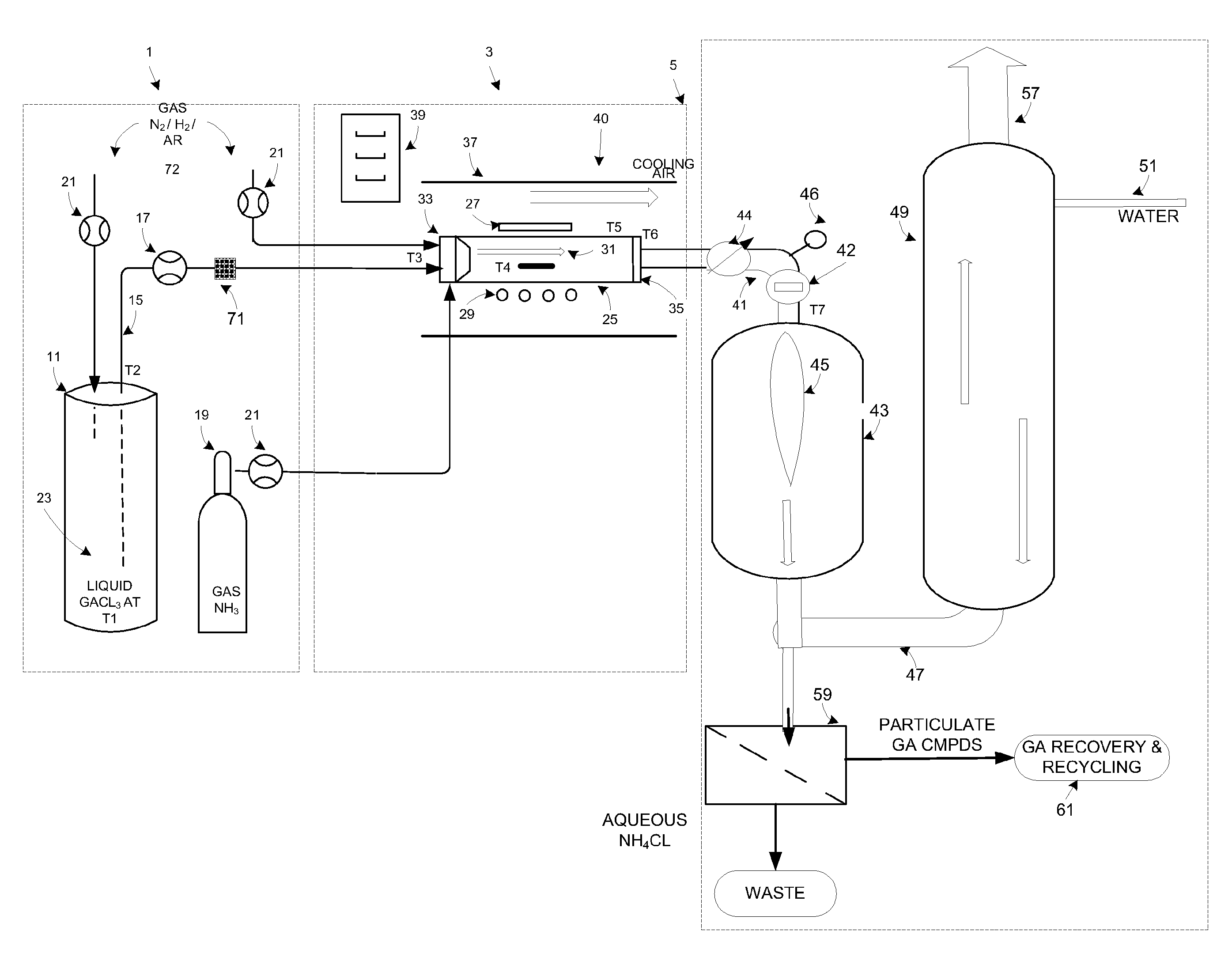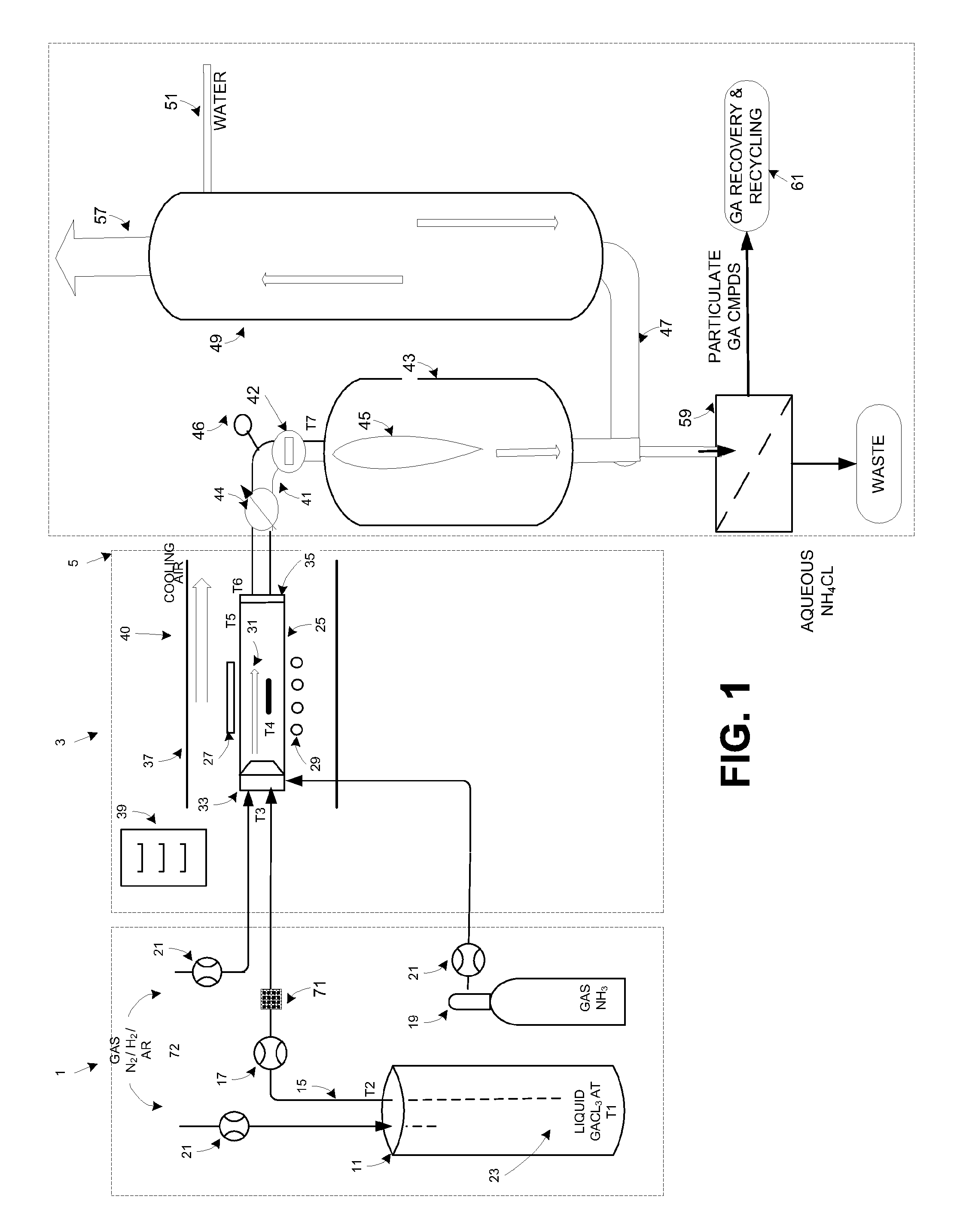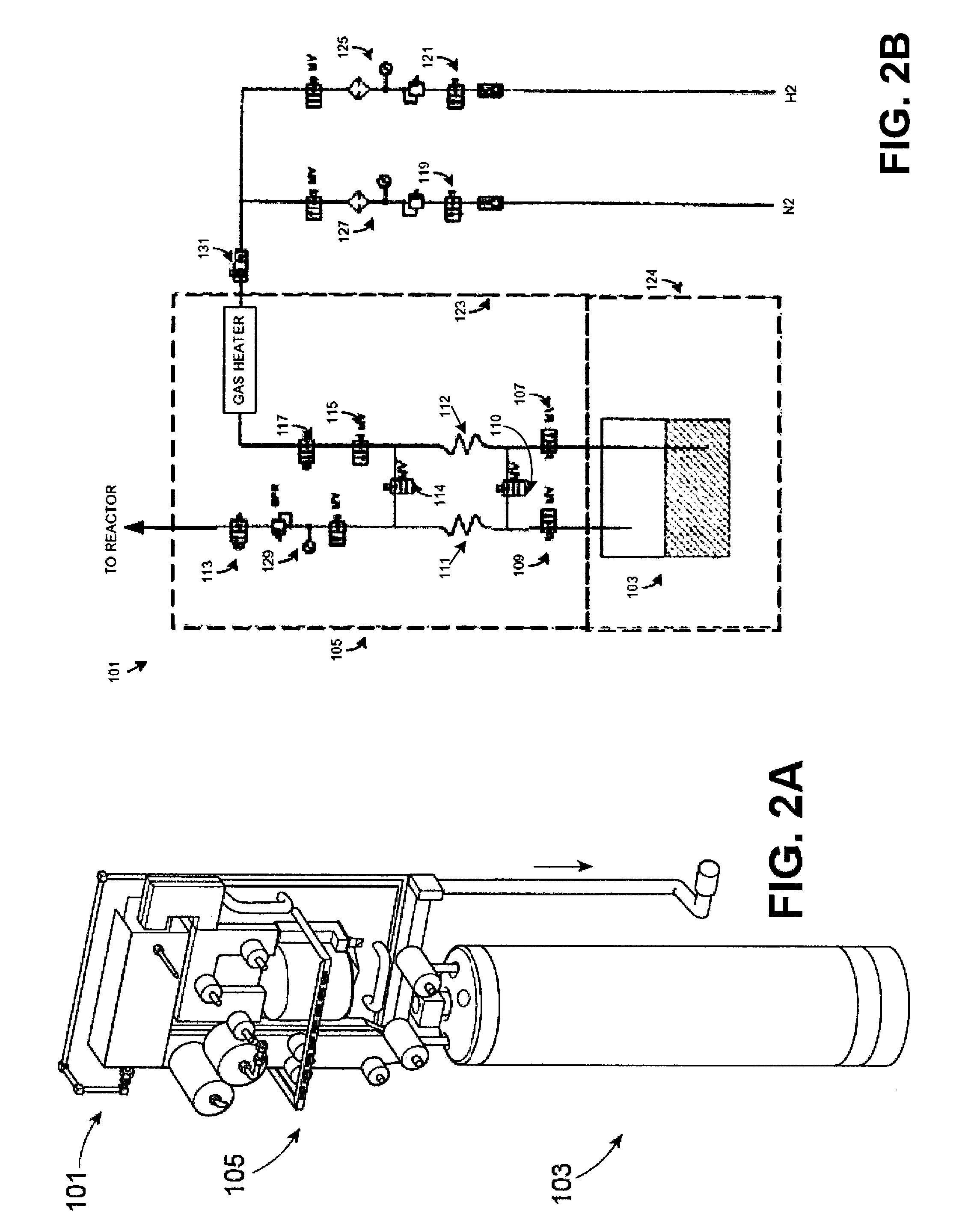Abatement of reaction gases from gallium nitride deposition
a gallium nitride and reaction gas technology, applied in the direction of gas-gas reaction process, crystal growth process, separation process, etc., can solve the problem of difficult to grow bulk single crystal substrates of the group iii-nitride compound, lack of readily available single crystal substrates, and substantial hinderance in commercial use of them, so as to facilitate sustained high-volume manufacturing of semiconductor materials, reduce condensation, and enhance the effect of semiconductor material manufacturing
- Summary
- Abstract
- Description
- Claims
- Application Information
AI Technical Summary
Benefits of technology
Problems solved by technology
Method used
Image
Examples
example
[0129]The invention is now compared to a standard or conventional HVPE system to illustrate the advantages and unexpected benefits that are provided when conducting HVM of Group III-V material according to the invention. Prior to setting forth this comparison and by way of introduction, conventional HVPE systems are first briefly described in relevant part.
[0130]A conventional HVPE system consists of a hot-wall tube furnace usually fabricated of quartz. The Group III precursor is formed in-situ in the reactor by flowing HCl over a boat holding the Group III metal in a liquid form. The Group V precursor is supplied from external storage, e.g., a high pressure cylinder. Conventional HVPE has been used for the growth of arsenide, phosphide and nitride semiconductors. For the growth of GaN, the Group III source is typically molten Ga in a quartz boat (with which the HCl reacts to form GaCl), and the Group V source is usually ammonia gas.
[0131]In more detail, the quartz tube can be orien...
PUM
| Property | Measurement | Unit |
|---|---|---|
| mass flow | aaaaa | aaaaa |
| temperatures | aaaaa | aaaaa |
| diameter | aaaaa | aaaaa |
Abstract
Description
Claims
Application Information
 Login to View More
Login to View More - R&D
- Intellectual Property
- Life Sciences
- Materials
- Tech Scout
- Unparalleled Data Quality
- Higher Quality Content
- 60% Fewer Hallucinations
Browse by: Latest US Patents, China's latest patents, Technical Efficacy Thesaurus, Application Domain, Technology Topic, Popular Technical Reports.
© 2025 PatSnap. All rights reserved.Legal|Privacy policy|Modern Slavery Act Transparency Statement|Sitemap|About US| Contact US: help@patsnap.com



